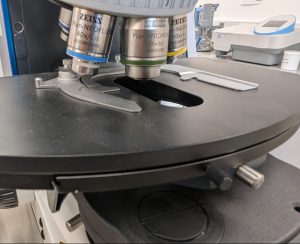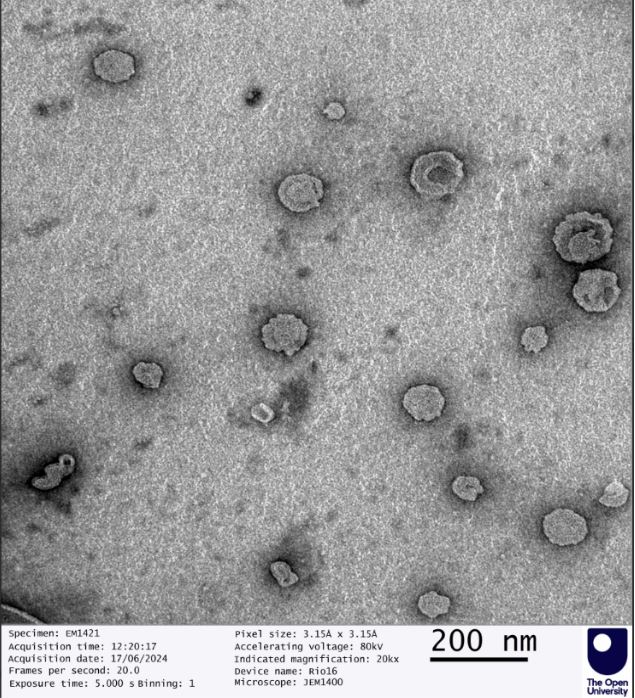Debunking the dry liposome myth: are only liquid liposomes legitimate in food supplements?
At GMPriority Pharma, we’re committed to science-backed innovation and integrity in liposomal formulation.
In recent months, we’ve observed a troubling trend: myths and misinformation being spread about dry (powdered) liposomes, especially within the food supplement industry.
Contract manufacturers without the level of expertise in nanoencapsulation claim:
“Only liquid liposomal formulations preserve the full integrity and function of liposomes.”
“When liposomes are turned into powder, they lose their structure, collapse into unstructured ingredients.”
“Liquid liposomes are the only true standard in nutrient delivery.”
These statements are not only misleading, they are scientifically incorrect.

Understanding Liposomes: Wet vs. Dry
What are liposomes?
Liposomes are phospholipid-based vesicles that encapsulate active ingredients like vitamins, minerals and antioxidants. In food supplements, they are utilised to enhance bioavailability, protect sensitive actives and improve nutrient absorption.
What’s the difference between wet and dry liposomes?
Wet liposomes: Suspended in water or another aqueous base. Common in liquids or softgels.
Why Dry Liposomes Are Scientifically Valid
Powdered liposomes retain their structural integrity when correctly formulated with the right cryoprotectants and stabilisation techniques such as acacia or maltodextrin. These substances protect the delicate bilayer membranes during drying and storage.
Upon rehydration, the liposomes reform their vesicular structure and restore functionality, as demonstrated in independent, peer-reviewed studies.
Hussein et al., 2019: Proved that spray-dried liposomes retained integrity and release profiles for oral delivery.
Omer et al., 2018: Demonstrated proliposome microparticles rehydrated for effective pulmonary delivery.
Chen et al., 2010: Reviewed the role of lyoprotectants in preserving liposomal structure during freeze-drying.
Crowe et al., 1984: Found that trehalose stabilises dry liposomes by preventing lipid fusion and leakage.
These studies used advanced techniques like Cryo-TEM, Dynamic Light Scattering (DLS) and encapsulation efficiency testing to confirm structural preservation.

Dry Liposomes – Misleading Marketing
Myth 1: “Only liquid liposomes are real liposomes.”
Fact: Liposomes are defined by structure, not state. Dry liposomes reform vesicular structures upon hydration.
Myth 2: “Drying liposomes destroys them.”
Fact: Poorly formulated powders may degrade, but properly stabilised liposomes retain full functionality.
Myth 3: “When liposomes are turned into powder, they collapse into unstructured ingredients.”
Fact: This only happens with poorly formulated powders. When constructed correctly using stabilisers like maltodextrin, dry liposomes retain their structure and re-form into functional vesicles once rehydrated, just as intended.

Dry Liposomal Vitamin C Under TEM Characterisation
The Advantages of Dry Liposomal Supplements
Shelf Life
Dry liposomes are more stable, require no refrigeration, and do not require the use of preservatives.
Flexibility
Dry liposomes can be used in capsules, sachets, powders or drink mixes, allowing for versatile product formats.
Convenience
Ideal for on-the-go consumers and global shipping.
Are Dry Liposomes Right for Every Ingredient?
With proper formulation and cryoprotection, dry liposomes are viable for a wide range of vitamins, minerals, plant extracts and more. They may not be the solution for all ingredients.
At GMPriority Pharma: Science First, Always
We formulate both liquid and dry liposomal supplements. We choose what’s scientifically appropriate for the nutrient, the delivery method and the consumer experience.
Our formulation teams are guided by peer-reviewed evidence, not sales and marketing tactics. We collaborate with academic researchers and continuously invest in nanoencapsulation R&D to ensure our liposomes meet the highest quality and performance standards.
Final Word: Be Led by the Science
“The absence of ability and knowledge to make dry liposomes doesn’t mean they don’t exist.”
— GMPriority Pharma Chief Scientist, Professor Mohammad Najlah.
If you’re a brand, distributor or formulator looking to create next-generation liposomal supplements, don’t fall for liquid-only marketing hype.
Let us show you how to do it right, whether your formula is wet, dry or hybrid.
